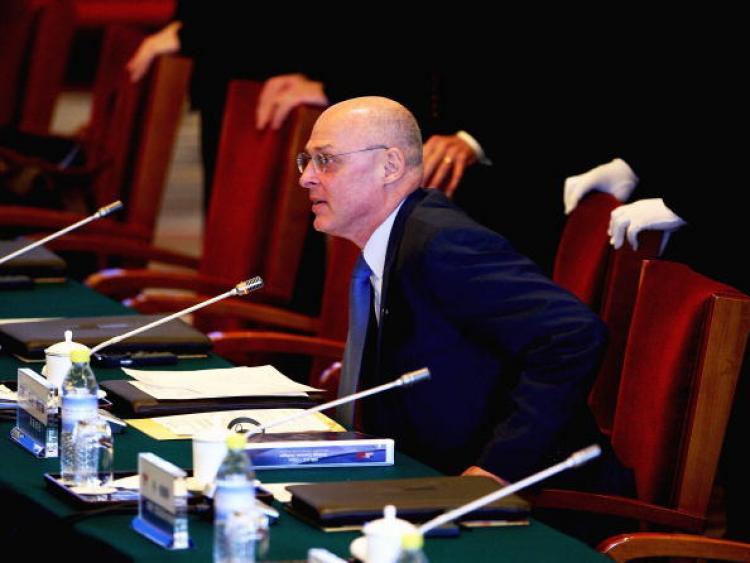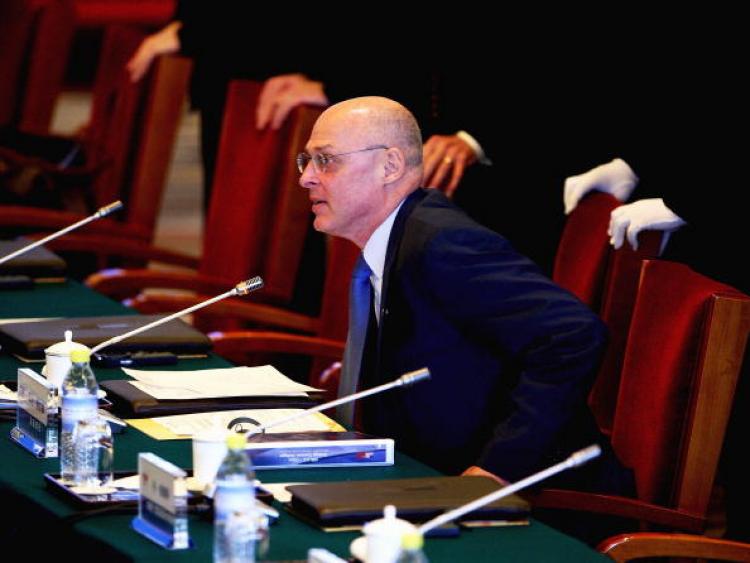NEW YORK—The Government Accountability Office (GAO) this week found that the U.S. Treasury’s $700 billion troubled asset relief program (TARP) has “critical” oversight problems in its first official audit of the government program to address the ailing U.S. economy.
In a 66-page report to Congress, the GAO suggests that the Treasury needs more transparency, oversight and regulation, better communication, and hire more personnel to ensure the program’s long-term success.
Originally, the $700 billion TARP was for buying up mortgage-related securities from banks’ balance sheets, but weeks after the program’s announcement, the Treasury committed $250 billion of the total for purchasing stakes in banks directly.
So far, the Treasury has used $115 billion to purchase stakes in eight national banks and close to $40 billion in 44 smaller institutions. On Monday, Treasury Secretary Hank Paulson said his staff is in the process of reviewing applications of U.S. banks seeking governmental capital infusion.
These strict guidelines for participating institutions require regulatory oversight, but so far the Treasury does not have the processes in place to support such functions, the GAO found.
“Treasury has not yet determined how it will monitor compliance with this or other requirements such as limitations on dividend payments and stock repurchases,” the GAO said in the report. “It is also unclear what other approaches Treasury will pursue to meet the purposes of the act, including insuring mortgage-related assets.”
A new administration will control Washington in January, and the GAO recommends building a process to ease the transition by keeping key leadership positions filled both during and after the transition.
The GAO also found that the Treasury took certain steps to promote the hiring of small businesses in carrying out TARP procedures. While the Treasury set no requirement for using small or minority-owned businesses for procurement, its Web site encourages small businesses to apply. Small businesses not meeting the vendor requirements could instead act as subcontractors.
So far, the federal assistance program has somewhat halted large bankruptcies in the financial services industry. The latest bank tottering on the edge, Citigroup Inc., was thrown a lifeline last week to ensure the company’s continued survival.
In a press conference this week, Sec. Paulson said he is not ruling out the possibility of assisting insurance companies using TARP funds. Several insurance companies already qualify due to their designations as bank holding companies, but it remains to be seen if all insurance companies will qualify.
American International Group (AIG) is already reaping rewards of a government bailout. The company announced this week that a new entity funded by AIG and the Federal Reserve purchased $46 billion of AIG’s troubled credit default swaps, which were subsequently terminated.
The terminations prevented AIG from needing to post additional collateral as their values continue to decline. AIG received a federal bailout after a near-bankruptcy in September as the value of its risky derivative holdings crumbled.
The insurance giant is actively seeking to sell portions of its global operations to pay back the Fed’s loan.
In a 66-page report to Congress, the GAO suggests that the Treasury needs more transparency, oversight and regulation, better communication, and hire more personnel to ensure the program’s long-term success.
Originally, the $700 billion TARP was for buying up mortgage-related securities from banks’ balance sheets, but weeks after the program’s announcement, the Treasury committed $250 billion of the total for purchasing stakes in banks directly.
Oversight Issues
Banks participating in the capital injection plan must issue senior preferred stock and pay dividends to the U.S. federal government, and must abide by a set of rules and regulations restricting spending, executive compensation and bonuses, and transparent reporting.So far, the Treasury has used $115 billion to purchase stakes in eight national banks and close to $40 billion in 44 smaller institutions. On Monday, Treasury Secretary Hank Paulson said his staff is in the process of reviewing applications of U.S. banks seeking governmental capital infusion.
These strict guidelines for participating institutions require regulatory oversight, but so far the Treasury does not have the processes in place to support such functions, the GAO found.
“Treasury has not yet determined how it will monitor compliance with this or other requirements such as limitations on dividend payments and stock repurchases,” the GAO said in the report. “It is also unclear what other approaches Treasury will pursue to meet the purposes of the act, including insuring mortgage-related assets.”
Direction and Continuity
The Treasury currently does not have a formal plan in place to direct the spending of the remainder of the bill, which GAO found to be worrisome, creating “uncertainty about the direction of the program and impeding efforts to effectively implement TARP.”A new administration will control Washington in January, and the GAO recommends building a process to ease the transition by keeping key leadership positions filled both during and after the transition.
The GAO also found that the Treasury took certain steps to promote the hiring of small businesses in carrying out TARP procedures. While the Treasury set no requirement for using small or minority-owned businesses for procurement, its Web site encourages small businesses to apply. Small businesses not meeting the vendor requirements could instead act as subcontractors.
Jury’s Still Out
It is still too early to tell whether TARP is achieving its intended effect of stabilizing the U.S. economy, and a majority of the earmarked funds have not yet been allocated.So far, the federal assistance program has somewhat halted large bankruptcies in the financial services industry. The latest bank tottering on the edge, Citigroup Inc., was thrown a lifeline last week to ensure the company’s continued survival.
In a press conference this week, Sec. Paulson said he is not ruling out the possibility of assisting insurance companies using TARP funds. Several insurance companies already qualify due to their designations as bank holding companies, but it remains to be seen if all insurance companies will qualify.
American International Group (AIG) is already reaping rewards of a government bailout. The company announced this week that a new entity funded by AIG and the Federal Reserve purchased $46 billion of AIG’s troubled credit default swaps, which were subsequently terminated.
The terminations prevented AIG from needing to post additional collateral as their values continue to decline. AIG received a federal bailout after a near-bankruptcy in September as the value of its risky derivative holdings crumbled.
The insurance giant is actively seeking to sell portions of its global operations to pay back the Fed’s loan.





